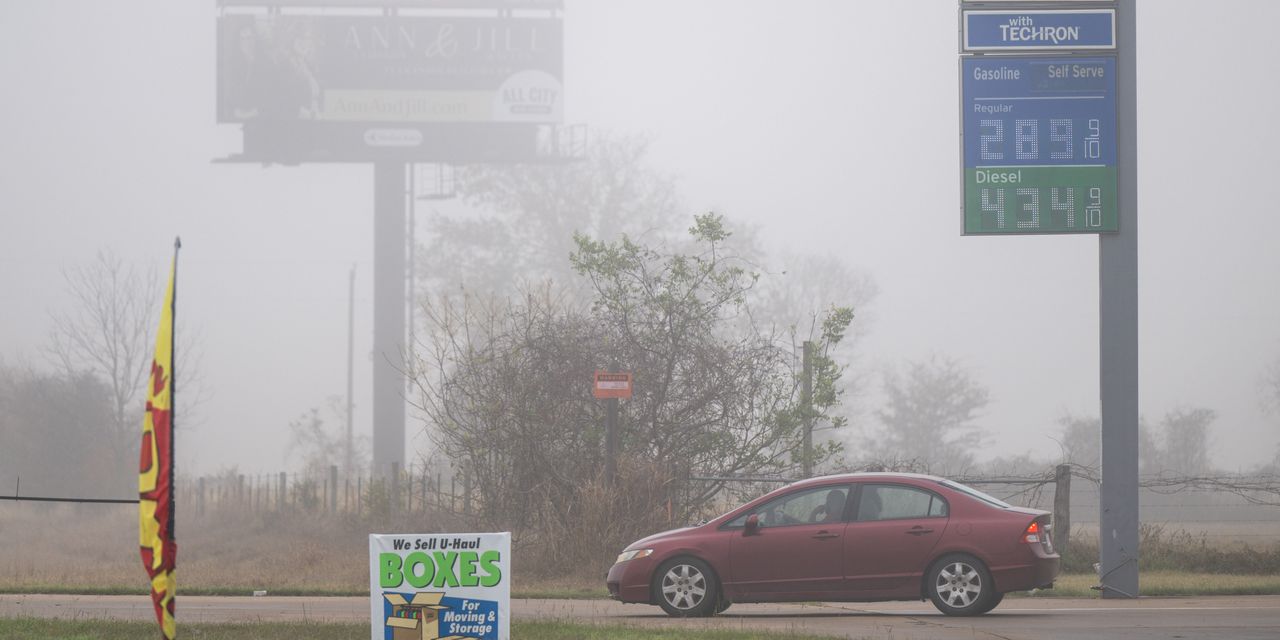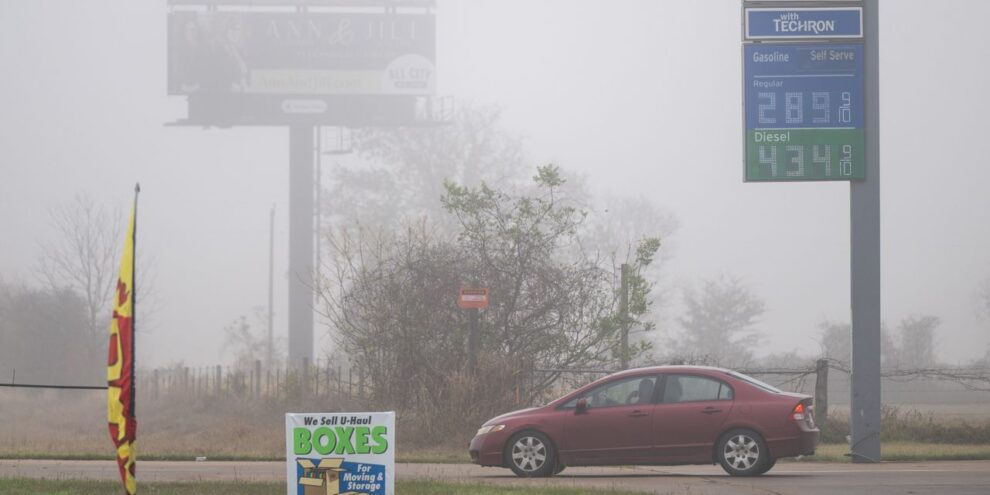
Gas prices on Thursday were slightly less on average than they did one year ago — with a slim one-cent margin — but experts say there could be cheaper gas in the weeks and month to come.
Thursday’s national average for a gallon of gas was approximately $3.33, AAA said. That’s down from $3.34 this time last year, and significantly lower than the record high of $5.01 a gallon recorded in mid-June.
Six months after drivers were snapping photos of high prices at the pump, gasoline-industry experts say the downward trend is due to a combination of falling crude-oil prices and a drop in driver demand after the traditionally busier summer months.
“We expect gas prices likely are going to continue trending lower,” said AAA spokesman Devin Gladden. It’s possible the national average will fall below the $3-per-gallon mark, but when that happens and for how long it lasts is unclear, he added.
“‘We are trending lower. Do we get to $2.99? Nationally, I think we have a shot at it.’”
The key question is where crude-oil prices go, he said. Crude-oil costs account for just over 50% of the price in a gallon of gas, the single largest contributor to the pump price, according to the U.S. Energy Information Administration.
Oil markets are weighing a lot of open questions, Gladden said. Those include the future of American consumer demand, prospects for Chinese demand and the impact of a $60 price cap on Russian seaborne oil, Gladden said.
West Texas Intermediate crude for January delivery was up 87 cents, or 1.2%, to trade at $72.88, making some gains after oil prices touched the lowest point in nearly a year.
There are no guarantees that gas prices will continue to fall. “There’s still a lot of unanswered questions that could send oil prices higher,” Gladden said. “The message is the oil market remains highly, highly volatile,”
“We are trending lower. Do we get to $2.99? Nationally, I think we have a shot at it,” said Denton Cinquegrana, chief oil analyst at Oil Price Information Service. (OPIS, an energy-industry data and news provider, is owned by Dow Jones, publisher of MarketWatch.)
It’s unlikely to happen in December, Cinquegrana said. But by January, the chance at an average retail price below the $3 mark brightens as demand typically wanes after the holiday season when people tend to have less motivation — and money — to travel.
National averages, however, mask regional price differences. Along the West Coast, AAA data show average prices exceed $4 per gallon, while many states in the South have pump prices that have already fallen below the $3 mark.
In the heart of the price shock, research and anecdotal evidence indicated people were driving less to conserve gas and cash. One AAA survey last summer said nearly two-thirds of drivers had changed their habits, and the most popular tactic was driving less.
As gas prices have eased, more people have returned to the office. Many white-collar workers are choosing hybrid work, a combination of working from home and at the office.
So what happens next?
In a roughly two-month stretch, aggregate volume at gas stations is down 4% to 6% on a year-over-year basis, Cinquegrana said. That might be a reflection of less driving, but it also might also be due to more fuel-efficient cars on the road, he added.
Next Tuesday, the Bureau of Labor Statistics will release November inflation data. During October, overall inflation rose 7.7% on an annual basis. For comparison, inflation increased 6.2% on a yearly basis in October 2021.
Don’t miss: U.S. consumer sentiment improves in December as inflation worries ease
Also see: U.S. wholesale price inflation picks up in November, but is lower for year
As gas prices have slid, so have diesel-fuel prices — albeit to a lesser extent, Gladden noted. That matters because diesel is often the fuel that semitrailer trucks use as they haul consumer goods interstate from warehouses to stores.
On Thursday, the diesel-fuel price averaged $5, up from $3.61 a year ago, Gladden noted. “Demand remains very robust, unlike gasoline,” he said. High fuel costs will ultimately seep into costs passed along to consumers, he added.
“ ‘The inflation fever is breaking, but it hasn’t gone away.’ ”
Gas prices aside, some Americans are already under a great deal of financial pressure. One-quarter of parents told Pew Research Center pollsters that they didn’t have enough money for food or rent/mortgage at least once in the past 12 months.
Lower-income families typically spend a larger portion of their income on essentials like food and housing and, for those who drive, gasoline. More than half of households making less than $43,800 a year said there were times when they struggled to pay for food or shelter.
“Some relief has been seen from the peaks of inflation, particularly with hugely consequential gasoline prices,” Mark Hamrick, senior economic analyst
at personal-finance site Bankrate.com, told MarketWatch.
“Whatever the forthcoming November report on inflation at the retail level looks like, it is not going to sound an all-clear on high prices,” he said, adding, “The inflation fever is breaking, but it hasn’t gone away.”








